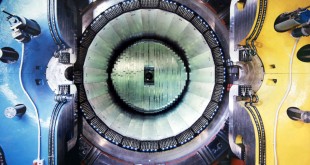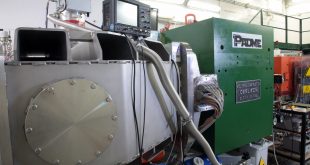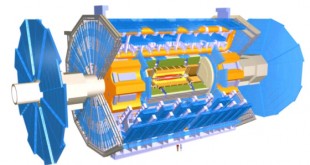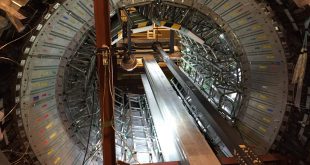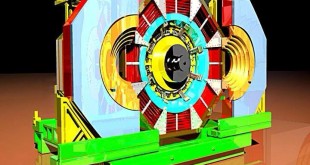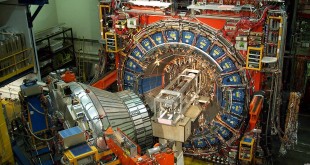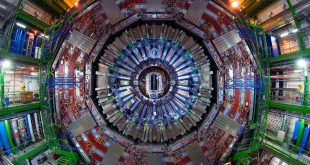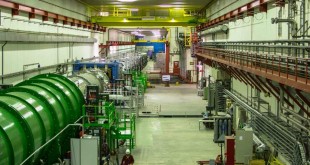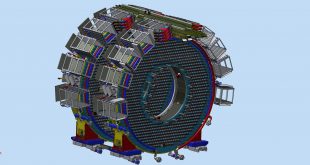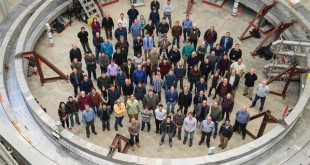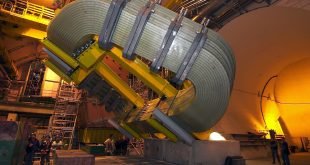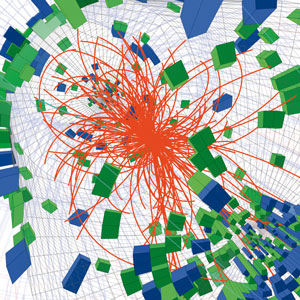
The first decades of the 20th century saw intense activity in the study of the structure of the atom. Observation of radioactive decay and interaction of particle beams with matter allowed physicists to make fundamental discoveries. At the same time, thanks to the study of cosmic radiation, it was possible to observe particles until then unknown. Technological development subsequently facilitated the construction of accelerators, machines that increase the energy of the particles making them travel to near the speed of light, the maximum speed possible for any kind of body. The use of accelerators has permitted exploration of the fundamental constituents of atomic nuclei and the creation of new forms of matter. In linear accelerators, particles are made to collide with a fixed target, while in circular accelerators two particle beams accelerated in opposite directions collide with each other. The quantity of energy that the particles have acquired before impact are converted into other forms of matter thanks to the interaction, thus making it possible to observe new particles.
KLOE-2
KLOE-2 is the main particle physics experiment at Frascati National Laboratory (LNF) and represents the continuation of the KLOE experiment that formerly took data from 2000 to 2006 at the electron-positron collider DAΦNE, the phi meson “factory” at LNF.
PADME
There is strong astrophysical evidence that most of the matter making up the Universe is not “ordinary matter” (i.e. it is not constituted by particles described by the Standard Model). The most popular hypothesis among physicists is that it consists of a new kind of matter, electrically neutral and stable, which does not interact (at all or very weakly) with ordinary matter and therefore does not produce electromagnetic radiation, i.e. it is “dark”.
ATLAS (CERN - Ginevra)
ATLAS is the largest piece of equipment at LHC, with a length of 26 m and a maximum diameter of 22 m. These dimensions are dictated by the high performance required of the equipment, which has the objective of a detailed and thorough examination of the processes involving the Higgs boson and the systematic study of the properties of heavy b e t quarks, which will be produced with high frequency in proton-proton collisions.
BELLE II (KEK - Tsukuba)
The first generation B-factory experiments, Babar and Belle, began data collection in 1999 at the asymmetric e+e– colliders PEPII at SLAC (Stanford, USA) and KEKB at KEK (Tsukuba, Japan), respectively. Within two years, both collaborations had attained convincing evidence of CP violation in B-meson decays, a discovery that netted theorists Makoto Kobayashi and Toshihide Maskawa a share of the 2008 Nobel Prize in Physics.
BESIII (IHEP - Pechino)
The BESIII experiment, operational since 2008, measures the characteristics of events produced in the annihilation of electrons and positrons colliding in the BEPCII (acronym of Beijing Electron Positron Collider) accelerator, at the IHEP laboratory in Beijing. The BEPCII collider runs at a total energy between 2 and 4.2 GeV, the region in which particles with c (charm) quarks are produced with high frequency.
CDF2 – The Collider Detector at Fermilab
The CDF has achieved many important results. The most famous in 1994: on 26 April the CDF collaboration announced the first evidence of the top quark. 2006 was the year of another important discovery: the oscillation of the Bs meson. In 2008 the great news: the prestigious “Panofsky 2009” prize of the American Physical Society went to the two Italians, Aldo Menzione and Luciano Ristori, leaders of crucial projects for the above-mentioned discoveries: the SVX silicon vertex detector and the SVT super-processor.
CMS (CERN - Ginevra)
The CMS experiment (Compact Muon Solenoid) is one of the four experiments around the interactions points of LHC. The experimental program of CMS is wide and general purpose, namely it is build to study all possible phenomena that could happen at the huge Energy produced in LHC. CMS is composed by several layers of detectors surrounding the LHC collision point and that works as a big and complex 3-dimensional camera with 140 Millions channels and able to shot 40 Million “pictures” per second (as many as the protons collisions in LHC).
NA62 (CERN - Ginevra)
There are two ways to search for new physics: one aims to increase the available energy to produce and observe new particles (a famous example of this “discovery” physics is the search for the Higgs boson at the LHC); the other aims to measure processes that have never been observed, being extremely rare, and compare them with the theoretical predictions, NA62 has in fact the primary purpose of searching for new physics by measuring a rare decay of the K meson.
MU2E (Fermi-Lab - Chicago)
The interest of Particle Physics is increasingly focused on the search for the so-called New Physics beyond the Standard Model (SM), in order to understand and answer some fundamental questions that this model does not describe. According to the SM, muons decay into electrons with a 3-body decay: μ– → e–, anti-νe, νμ, in which the lepton number and lepton flavor between the initial and final state are preserved.
UA9 (CERN - Ginevra)
In high-energy and particle physics success of experimental research is largely dependent on the quality of charged particles beam shaping during its both acceleration and injection in storage rings. To control the beams of charged particles, electromagnetic fields of different origin and configurations are typically applied. A common technique is based on the use of the electromagnetic field of the dipoles, quadrupoles, wigglers etc. of giant sizes (several meters for LHC), as well as bulky collimators.
g-2 – E989
The g-2 experiment, under construction at the Fermilab laboratory (Chicago-IL, USA), has the objective of measuring the magnetic anomaly of the muon with a precision of 1.6×10–10 (0.14 parts per million), such as to allow a very stringent test of the Standard Model. It will require a data sample 20 times more extensive than the previous experiment at Brookhaven National Laboratory and reduction by a factor of 3 of the uncertainty of the systematic effects.
LHCb (CERN - Ginevra)
Located in a vast underground cavern, 100 metres beneath the French countryside, LHCb is the smallest of the four large experiments at the Large Hadron Collider at the CERN laboratory near Geneva, Switzerland. With its unique design optimised for matter/anti-matter studies using beauty and charm quarks, it is a project dedicated to flavour-physics measurements.
 INFN-LNF Laboratori Nazionali di Frascati
INFN-LNF Laboratori Nazionali di Frascati
